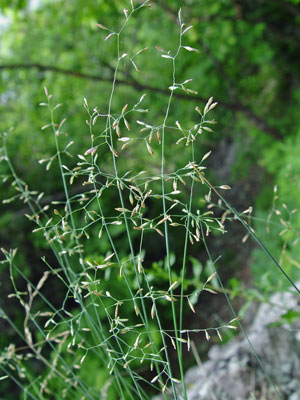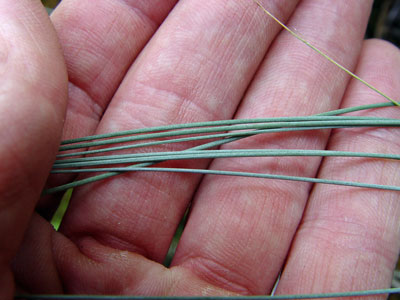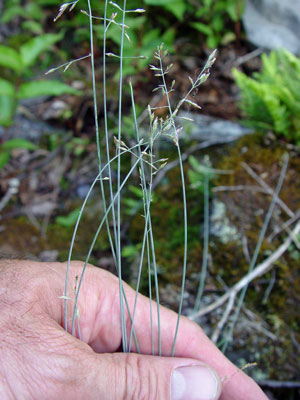DACF Home → Bureaus & Programs → Maine Natural Areas Program → Communities, Plants, and Animals → Rare Plants → Poa glauca

Poa glauca Vahl.
White Bluegrass
- State Rank: S1
- Global Rank: G5
- State Status: Threatened
Habitat: Dry, often calcareous, rock, gravels, and shores [Rocky summits and outcrops (non-forested, upland)]
Range: Circumboreal, south to Maine, west to Utah and Washington .
Aids to Identification: Members of the genus Poa are recognized by their open panicles with several flowered spikelets, glumes are keeled and are shorter than the spikelets, and the florets lack awns. Poa glauca is characterized by having only 3 distinct veins on the lemma, lacking rhizomes, and a glabrous callus on the floret. P. glauca may be confused with P. fernaldiana, but the 2 can be separated based on habitat. P. fernaldiana is found in alpine habitats and has fewer (2) panicle branches per node.

Ecological characteristics: Restricted to dry calcareous habitat in northern Maine.
Phenology: Fruiting June through August.
Family: Poaceae

Synonyms: Represented in Maine and New England by ssp. glauca. Synonyms include Poa glaucantha Gaudin.
Known Distribution in Maine: This rare plant has been documented from a total of 7 towns in the following counties: Aroostook, Oxford, Penobscot, Piscataquis
Reason(s) for rarity: At southern edge of range. Calcareous habitat in Maine is naturally scarce.